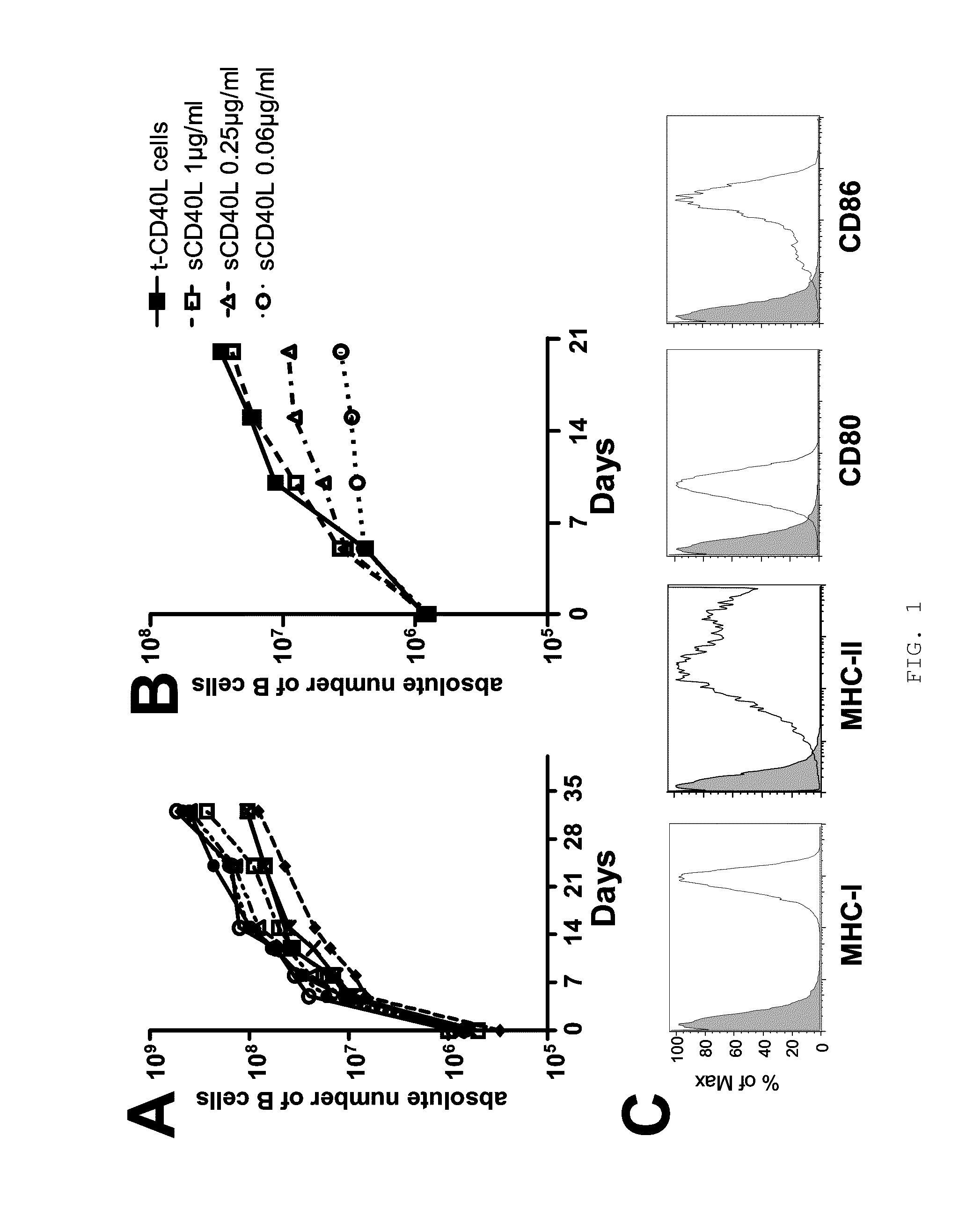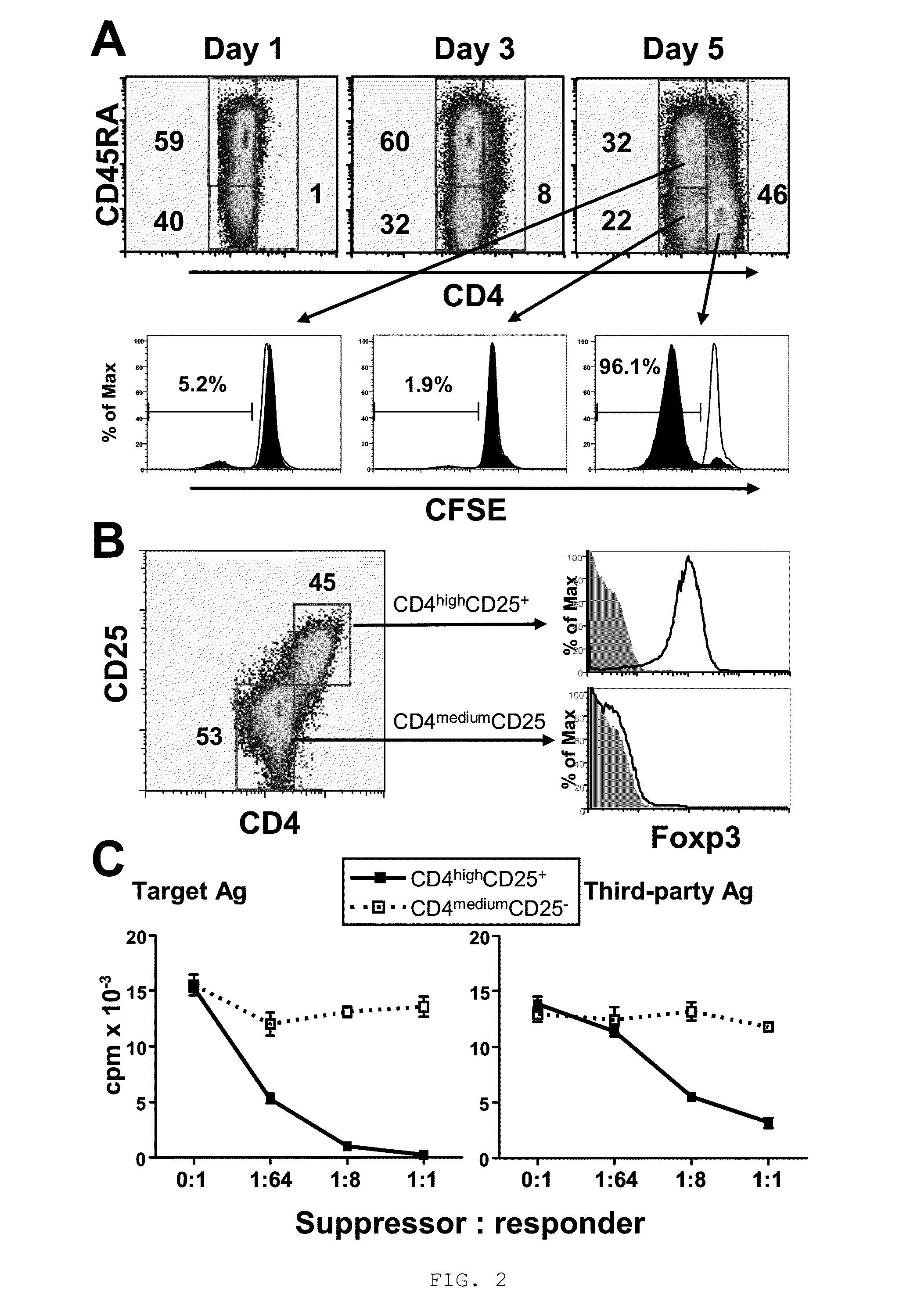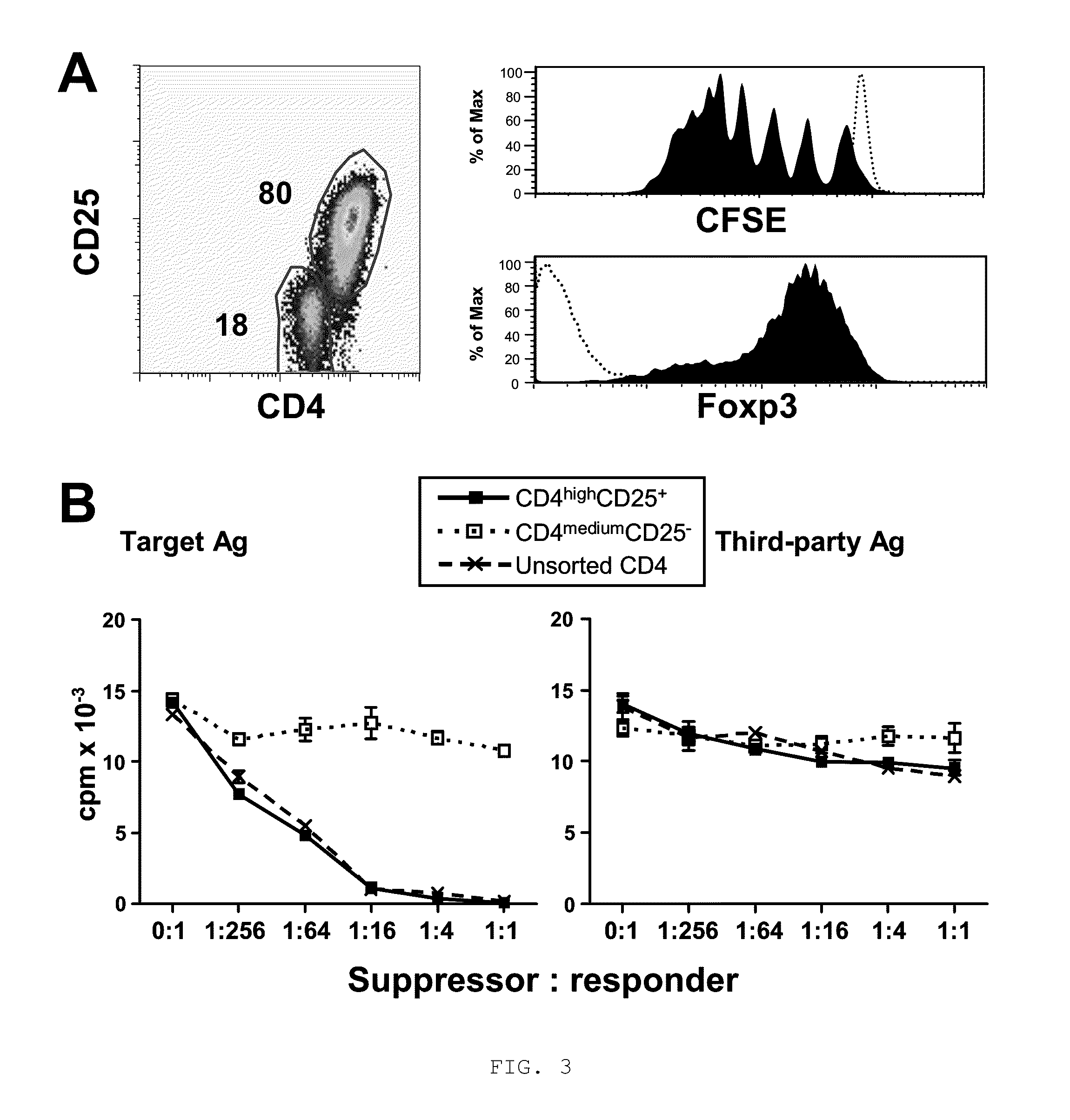Method to induce and expand therapeutic alloantigen-specific human regulatory T cells in large-scale
a technology of human regulatory cells and t cells, which is applied in the direction of biocide, drug composition, immunological disorders, etc., can solve the problems of weakened overall immune system, unwanted side effects, and the impact of transplant rejection on the long term outcome, so as to facilitate the development of treg-based clinical immunotherapy, prevent transplant allograft rejection, and facilitate the effect of in vitro expansion
- Summary
- Abstract
- Description
- Claims
- Application Information
AI Technical Summary
Benefits of technology
Problems solved by technology
Method used
Image
Examples
example 2
Human Alloreactive CD4high Cells Induced by CD40-activated B Cells are Treg
[0057]To determine whether allogeneic CD40-activated B cells can induce Treg from CD4+CD25− T cells, purified circulating CD4+CD25− T cells (purity >99%) were stimulated with allogeneic CD40-activated B cells for 7 days. Surprisingly, a new cell subset with significantly upregulated levels of CD4 surface expression was induced after 5 days of allostimulation, and most of these CD4high cells lost CD45RA expression (FIG. 2A) and acquired CD45RO expression (data not shown). Furthermore, most of these CD4high cells also lost CFSE staining while the CD4medium cells still maintained their CFSE content (FIG. 2A), suggesting that the induced CD4high cells were proliferating alloreactive cells. These presumed alloreactive CD4high cells expressed CD25 and Foxp3, while CD4medium cells did not express these two Treg markers (FIG. 2B). Together, these findings indicated that CD40-activated B cells preferentially expanded ...
example 3
CD40-activated B Cells can Induce Alloantigen-specific CD4highCD25+ Treg from Naïve CD4+CD25− Cells
[0059]We next determined if alloantigen-specific Treg could be generated from purified naïve CD4+CD25− cells (CD4+CD45RA+CD45RO−CD25+) by co-culture with allogeneic CD40-activated B cells. As in the case of unfractionated CD4+CD25−T cells, naive CD4±CD25− cells expanded by co-culture with CD40-activated B cells also acquired a CD4high, CD25+ and Foxp3+ phenotype after 7 days of culture, (FIG. 3A). Furthermore, these CD4highCD25+Foxp3+ Treg underwent 7-8 cells divisions by 7 days of allostimulation (FIG. 3A). In contrast, CD4medium cells neither divided nor expressed CD25 and Foxp3 (FIG. 3A).
[0060]We further examined the suppressive capacity and alloantigen specificity of the CD4highCD25+ Treg induced from naive precursors. These CD4highCD25+ Treg significantly suppressed the original target alloantigen-induced proliferation, whereas CD4mediumCD25− cells did not show substantial suppres...
example 4
Characteristics of CD4highCD25+Foxp3+Alloantigen-specific Treg
[0062]We further characterized the phenotype of the induced CD4highCD25+Foxp3+ alloantigen-specific Treg population. CD25 was significantly upregulated from low basal levels by day 3 of culture, and more than 90% and 95% of CD4high cells expressed CD25 at day 3 and day 10 respectively, whereas there was no CD25 upregulation on CD4medium cells for up to 10 days of culture (FIG. 4A). The memory T-cell marker CD45RO was also upregulated in both CD4high and CD4medium cells, but while 95% of CD4high cells were CD45RO after 10 days of culture and only about 50% of CD4medium cells had this surface phenotype. Unlike previous reports indicating that the expression of CD27 and CD44 can discriminate functional CD4+CD25+Treg in human and mice,36,37 we found no significant differences in CD27 and CD44 surface expression by CD4high Treg compared to CD4medium T cells or within the population of CD4highCD25+ Treg (FIG. 4A). Most of induc...
PUM
| Property | Measurement | Unit |
|---|---|---|
| time | aaaaa | aaaaa |
| time | aaaaa | aaaaa |
| pore size | aaaaa | aaaaa |
Abstract
Description
Claims
Application Information
 Login to View More
Login to View More - R&D
- Intellectual Property
- Life Sciences
- Materials
- Tech Scout
- Unparalleled Data Quality
- Higher Quality Content
- 60% Fewer Hallucinations
Browse by: Latest US Patents, China's latest patents, Technical Efficacy Thesaurus, Application Domain, Technology Topic, Popular Technical Reports.
© 2025 PatSnap. All rights reserved.Legal|Privacy policy|Modern Slavery Act Transparency Statement|Sitemap|About US| Contact US: help@patsnap.com



